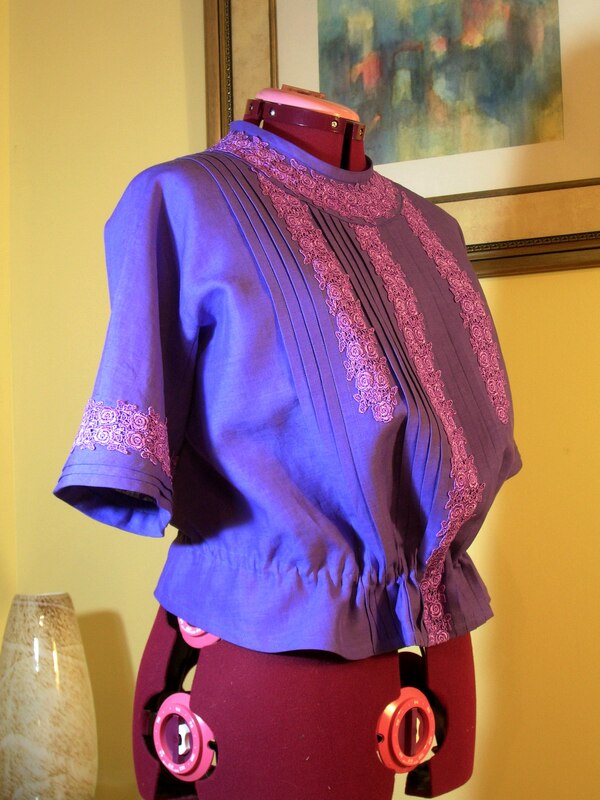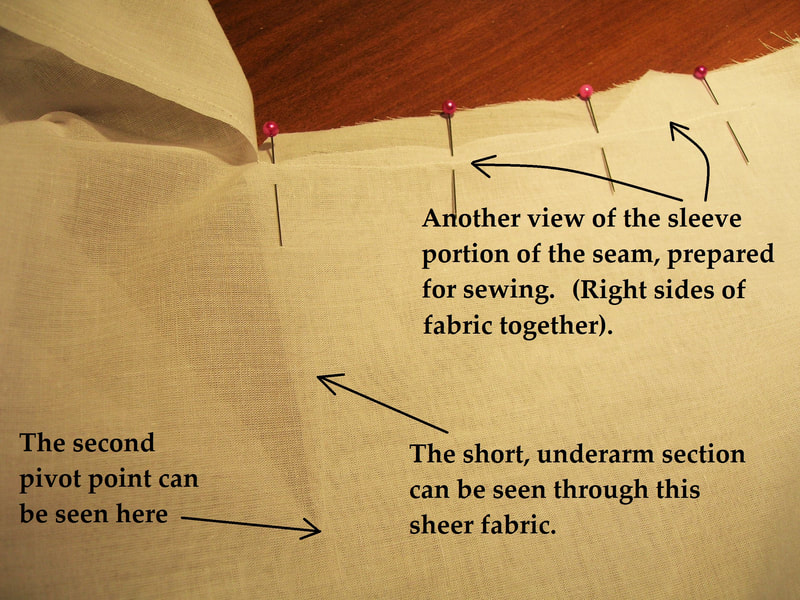 Section 3: This section contains reference photos of finished blouses made from this pattern, as a guide to how the completed garment should look. Click on "Play" (top left of 1st photo) to run slideshow; pause at any time. Click on a thumbnail to view an individual photo. Hover right or left on the slideshow string to fast forward or reverse.
0 Comments
 Section 2: This section sets out the steps in preparing, sewing and finishing the unique all-in-one seam in this blouse which closes the underarm, side seam and sleeve seam in one operation. Although this procedure may seem odd, or even bizarre and difficult, it is actually quite straightforward and makes sense if you follow the instructions step by step and sew carefully and slowly. This particular design feature first appeared in French garment patterns around 1909, but by 1912 was used almost exclusively for blouses and bodices that were cut all in one piece, and without a shoulder or armscye seam (a modified "kimono" cut). The obvious advantages to this clever innovation were that it drastically reduced the bulky, inelegant fit of kimono blouses under the arms, followed the line of the body more closely, and placed the side seam toward the back, slightly out of view. It was a brilliant and masterful solution to a common problem. Unfortunately, this technique could never lend itself to automated factory production or simple home-sewing (the original patterns were intended mainly for dressmakers), and so it disappeared by the mid-1910's. Please note: Many of the photos in this section were taken from Blouse #1911-A-017, but the procedure is exactly the same for this pattern #1912-A-003. Click on "Play" (top left of 1st photo) to run slideshow; pause at any time. Click on a thumbnail to view an individual photo. Hover right or left on the slideshow string to fast forward or reverse. #1912-A-003 Ladies' Fancy Batiste Blouse This album has 3 Sections -- Section 1 shows how to pre-tuck the fabric in the traditional Edwardian manner; Section 2 deals with the unique slashed, fitted dart technique for closing the sleeve, underarm and bodice side seam all in one process; and Section 3 shows sample photos of the completed blouse. Most fancy Edwardian/early 1910's blouses that were cut in one piece like this pattern, with fine tucks as a design feature, were pre-tucked on the flat yardage prior to the pattern pieces being cut out. This Section 1 shows the steps in preparing the pre-tucking for this particular blouse. Although tucking arrangements differed on different blouses, you can apply this same technique, with any necessary adjustments for the tucking arrangement, to any Edwardian cut-in-one blouse design. Click on "Play" (top left of 1st photo) to run slideshow; pause at any time. Click on a thumbnail to view an individual photo. Hover right or left on the slideshow string to fast forward or reverse.
|
OverviewThis section contains "help photos" keyed to selected 'History House' sewing patterns, to assist customers with aspects of historical construction. Archives
June 2024
Pattern List
All
|
Site powered by Weebly. Managed by Dot5Hosting








































































 RSS Feed
RSS Feed